Two years makes all the difference.
Two years ago, the Hyundai Sonata had out-Camry’d the Camry and out-Accorded the Accord. It had achieved at least parity with the blue chips – and exceeded them in some ways. No longer was it it the “value” choice – as opposed to one of the best choices.
Fast forward two years.
The Camry and Accord – both just completely redesigned – have upped their game.
But the choice is harder now.
WHAT IT IS
The Sonata is Hyundai’s mid-sized family sedan. It competes most directly with the Toyota Camry and Honda Accord sedans as well as the Chevy Malibu, Mazda6 and others in this general class.
It lists for $22,050 to start for the SE trim vs. $23,495 for the least-expensive version of the new Toyota Camry and $23,570 for the least-expensive version of the new Honda Accord sedan.
It also offers three engine choices vs. the usual two – and it still has the best full-car warranty (five years, 60,000 miles) and powertrain (10 years, 100,000 miles) coverage in the class.
The new Camry and Accord still come with just three year/36,000 mile whole car coverage – and five year, 60,000 mile coverage on their drivetrains.
On that count, the others haven’t upped their game.
WHAT’S NEW
The Sonata gets an exterior and interior styling refresh and more standard features, including blind spot detection system, rear cross traffic alert and lane change assist. The optional BlueLink telematics system has been integrated with Amazon Echo.
Models with the optional 2.0 liter engine get a new eight-speed automatic transmission, too.
Exceptionally plush.
Hugely roomy up front.
If something breaks, Hyundai picks up the tab for much longer than Toyota and Honda do.
WHAT’S NOT SO GOOD
Camry and Accord have more powerful – and economical – standard engines.
Camry and Accord come standard with adaptive cruise control and climate control AC; Sonata comes standard with manual AC and non-adaptive cruise control.
Camry and Accord both have much more backseat room.
You have your pick of three different engines, one without a turbocharger and two with one.
The standard engine is a 2.4 liter four cylinder carrying a 185 hp rating. It’s paired with a six-speed automatic transmission. Mileage with this engine is 25 city, 36 highway. You’ll get to 60 in a bit over 8 seconds.
Two years ago – one year ago – these numbers were at the top of the class for the segment. But this year, both Toyota and Honda have fired back with new-from-the-wheels-up Camrys and Accords. The 2018 Camry comes standard with a 2.5 liter four cylinder engine (no turbo) that produces a strong 203 hp and rates 28 MPG in city driving, 39 on the highway.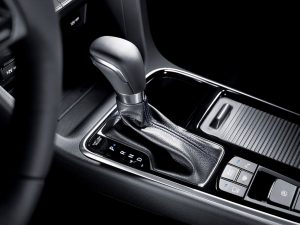
The new Accord comes standard with a 1.5 liter turbocharged four that makes 192 hp and rates 30 MPG in city driving and 38 on the highway. You can also buy this engine with a manual transmission, if you like. The 2018 Accord is the only car in this class that still offers shift-for-yourself.
Next up in the Sonata is a 1.6 liter four – with a turbo – paired with a seven-speed automated manual transmission. This combo is Hyundai’s maximum-effort MPG drivetrain. However, the maximum MPGs – 28 city, 37 highway – aren’t more maximum than the Camry and Accord’s standard engines wrangle.
Still, the Eco-engined Sonata does cost significantly less than the Camry/Accord – and the money you save up front has to be factored into the overall money-saving equation.
The top-dog Sonata engine is a 2.0 liter four – also turbocharged. This engine makes 245 hp – less than the new Accord’s optional top dog engine, which is now also a 2.0 liter four (no more V6) but rated at 252 hp.
And it’s way behind the new Camry’s still-available 3.5 liter V6 (the only big V6 still available in this class) which makes 301 hp and is now the strongest available engine in this class.
Hyundai has upgraded the transmission the 2.0 liter engine is paired with. You get an eight-speed automatic now instead of the six-speed that was standard last year.
But the new Camry comes standard with an eight-speed automatic, too – and with its standard engine. And the new Accord’s optional 2.0 liter engine is paired with a class-first ten-speed automatic transmission.
There are however pros – and cons – to all of this.
The Sonata’s standard six-speed automatic may not sound as sexy – as technologically hip – as the eight and ten-speed transmissions which are standard in the Camry and Accord. And the technologically more hip eight and ten-speed transmissions do offer a slight efficiency advantage, due to their tighter gear spacing and multiple overdrive gearing. But they are also more elaborate technology, which means more expensive technology.
Hence the Camry and Accord’s higher price vs. the Hyundai’s.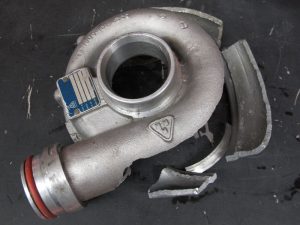
And if those techno-hip transmissions should ever fail post warranty . . .
And their coverage ends after just five years vs. ten for the Hyundai.
On the other hand, neither of the Camry’s engines rely on turbos to make power – or get good mileage. No turbos means no worries about turbo and turbo-related problems once the warranty coverage runs out.
And the Honda offers that manual six-speed transmission . . . .
Change has taken place in another way.
The Sonata – which was sportier in looks and behavior than the Camry, certainly – is now arguably the most Camry-like of the bunch. This is not a bad thing, either – if the thing you are looking for is an exceptionally quiet, very soft-riding, amiable car. Hyundai has done some fine-tuning to the suspension to make it even more so. Which changes have made it among the finest road-trip cars on the market right now.
But it is not a speedy car – even with its strongest available engine.
If you want speedy, you will be happier with the Accord and – yes – the new Camry. Especially the V6 Camry, which is a bullet. Zero to 60 in the high fives. Read that again.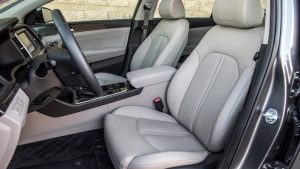
From a Camry.
Yes.
It’s what 301 horsepower can do.
The Sonata is best, arguably, when equipped either with its standard 2.4 liter engine – which is strong enough for everyday schlepp-driving and also simple enough to ease your mind about possible post-warranty issues, even though the post-warranty danger zone with this car is a very long way off. Still, a non-turbo 2.4 liter engine and a relatively straightforward six-speed automatic sounds like the right ticket for 150,000-plus trouble-free miles.
Or go with its optional turbo engine.
The 1.6 liter Eco engine may not sound like much on paper but if you look at the stopwatch, a Sonata so equipped gets to 60 in about the same mid-high seven seconds that it takes the 2.0-engined Sonata to achieve the same velocity. Neither is speedy relative to what the Camry and Accord are capable of, but the Eco engine is both less thirsty and less expensive. It averages about 5 MPG better – which is noticeable – and you can buy it for just $600 bucks over the price of the base-trim SE, which MSRPs for just over $22k.
Meanwhile, the least expensive 2.0-equipped Sonata you can buy is the Sport, which stickers for $27,600 to start.
And a base-engined Camry or Accord will keep up with it – while killing it on gas mileage.
Visually, there’s not a whole lot separation between the Sonata and most of the others in this class (the one exception here is the strikingly pretty Mazda6). They differ slightly in the face, not much from the sides – and very little from the rear. This is okay. They are primarily practical cars, after all.
The meaningful differences are dimensional.
The Sonata stands out from the crowd in terms of its unusually roomy front seat – 45.5 inches. The par for the class is around 42 inches – 42.3 inches for the 2018 Accord and 42.1 for the 2018 Camry. If you’re a very tall person, this is a difference you’ll notice immediately.
The Sonata also has a bit more front seat headroom than is par for the class – 40.4 inches vs. 39.5 in the Accord and (shocker) 38.3 in the Camry. Which – once upon a time – emphasized its Mrs. Doubtfirean practicality uber alles, but – suddenly – has become (dare it be said?) attractive and interesting, even to the extent of sacrificing some of its formerly Doubtfirean attributes.
The Sonata manages to be Doubtfirean without looking it. No old lady ambiance. No Noxzema vibe. The car looks – if not young – at least not old. And it has all that room up front.
Out back, too.
A huge (16.3 cubic foot) trunk. The new Camry’s is noticeably smaller (15 cubic feet).
But the new Accord’s is even larger – 16.7 cubic feet.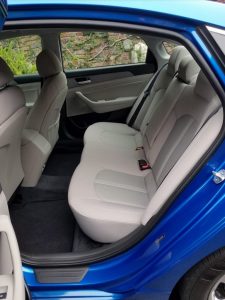
And its backseats are much roomier – 40.4 inches of legroom vs. 35.6 for the Sonata, which is only a little bit more than in some current compact-sized sedans. This lack of backseat legroom – vs. the standard bearers – is probably the Hyundai’s biggest single deficit, in terms of what you can’t help noticing – because almost five inches of difference (vs. the Honda) is hard not to notice.
The good news – if you’re looking at the Sonata – is that it’s much easier to “make” more backseat legroom by simply sliding the front seat forward. Which you can easily do – the tune of several inches – without cramping things up front.
And there’s no way to crutch the lesser headroom in the Camry and Accord. The higher/taller roofline also gives you a bit more visibility, because there’s a bit more glass area.
THE REST
Most of the secondary controls (buttons) are larger-than-usual, which makes it easier to press the right button when the car is moving – and without having to squint at the center stack while you’re doing it.
The 12V power points and USB ports are excellently located – where they can be seen and plugged into by feel, without having to look – just ahead of the shifter lever at the bottom of the center stack.
And there’s an additional USB port for the backseaters in the higher trim models.
Some in the car press will note – correctly – that Sonata does not come standard with climate control AC, just “old-fashioned” set-the-temperature-yourself AC. And “old fashioned” cruise control – rather than the Adaptive kind, which can slow and even bring the car to a complete stop in the event traffic up ahead slows down. The Camry and Accord do come standard with them.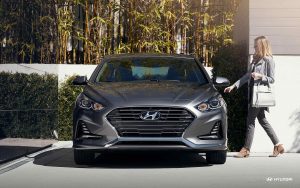
But – as per the earlier discussion above about the relative pros and cons of the Camry/Accord’s more “advanced technology” transmissions and so on, there are pros and cons here as well.
Climate control is electronic air conditioning. It is controlled (cue Dr.Strangelove voice) by a computah – not mechanically, via knobs and such. When the electronic controls fizzle – and they will, eventually – the cost to fix will not be small. Conventional/mechanically controlled AC is inherently more long-haul reliable.
And adaptive cruise control arguably encourages addled driving. This is not politically correct, runs counter to the current ethos that all gadgets are good gadgets – but it’s a truism nonetheless.
And it’s also one more thing that could fail and cost you money, eventually – once the warranty’s run out.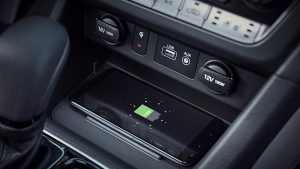
So it’s arguably nice that these things aren’t standard. And if you want them, you can order them. They are available as part of the Ultimate package, which also includes pedestrian detection, a heated steering wheel, wireless smartphone charger and a larger/nicer 8 inch touchscreen.
THE BOTTOM LINE
The Sonata’s chief flaw is that it’s no longer the newest/latest thing – which is a hard thing to be given how quickly the newest/latest thing no longer is. For the next few moments, the Camry and Accord will be newest/latest.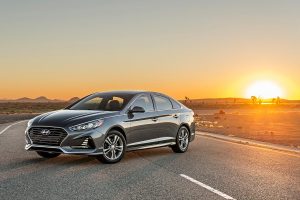
But a few moments after that . . .
This can work to your advantage.
Newest/latest not only costs more, you’ll usually pay more. Meaning: Not only is the sticker price higher, it’s likely there’s less wiggle room on it because of the clamor for newest/latest.
Expect to pay full sticker – maybe more – almost certainly not less – for a new Camry or Accord. But you will probably pay less than sticker for a new Sonata – which already stickers for less to start.
How much is newest/latest worth to you?
. . .
Got a question about cars – or anything else? Click on the “ask Eric” link and send ’em in!
If you like what you’ve found here, please consider supporting EPautos.
We depend on you to keep the wheels turning!
Our donate button is here.
If you prefer not to use PayPal, our mailing address is:
EPautos
721 Hummingbird Lane SE
Copper Hill, VA 24079
PS: EPautos magnets – they’re back! are free to those who send in $20 or more to support the site. Also, the eBook – free! – is available. Click here. Just enter you email in the box on the top of the main page and we’ll email you a copy instantly!




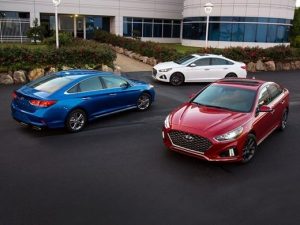
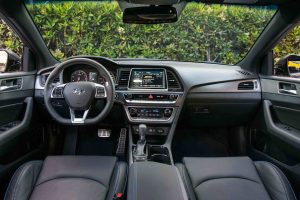
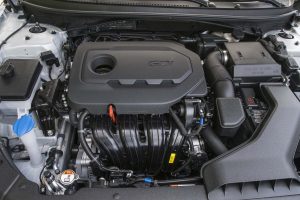
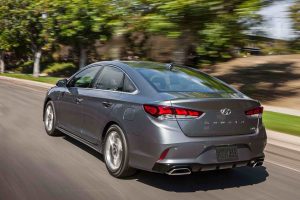
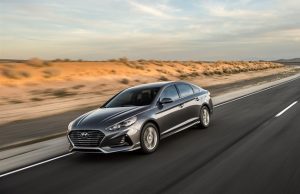
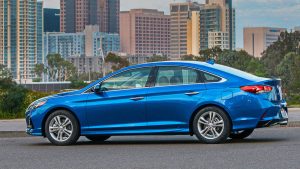







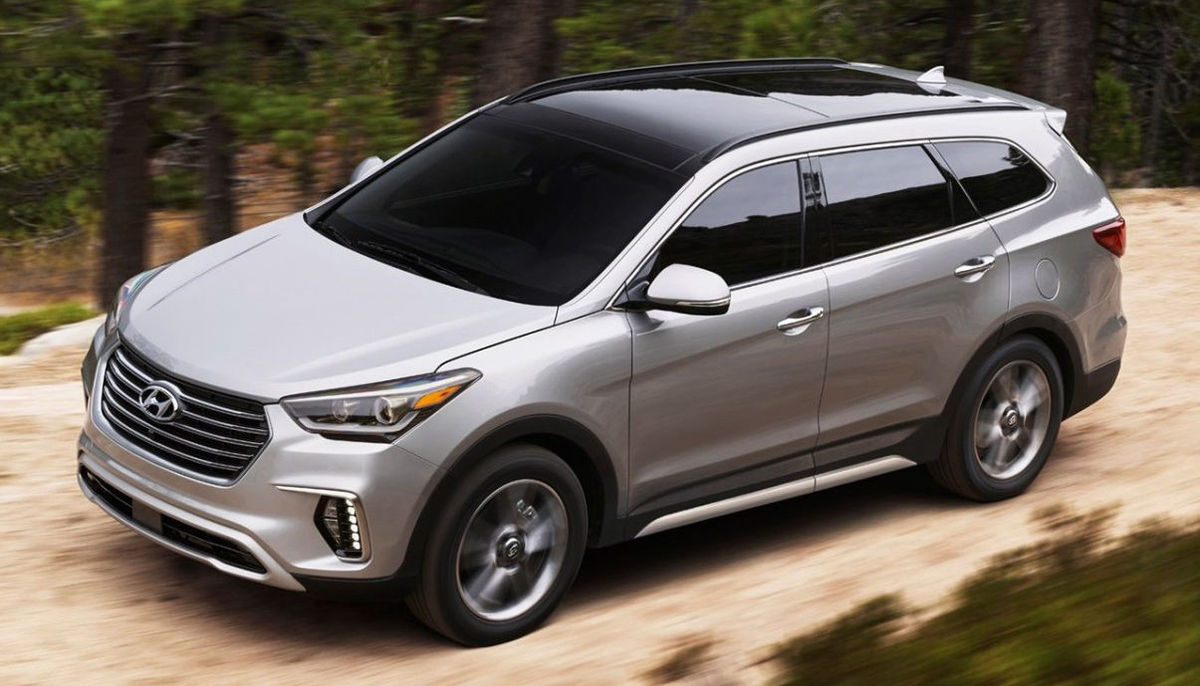
If you can get pretty much the same oomph without a Turbo, why would you store up trouble? I’ve had 20 years of Toyotas – Landcrushers, RAV4’s and Camry’s up the wazoo, None of them has delivered less than 200,000 miles with no more than routine maintenance.
I don’t know if a Turbo could do that.
Hi Bill,
I agree. I am not a fan of turbos – except in sports cars, which are a different animal. But we live in a Disposable Country with a Disposable mindset. People generally throw away their cars after six or fewer years – and sign up for a new debt load. In that case, no worries!
And it’s not just the body and suspension and interior that aren’t made to last but the jury is still out on whether the engine is made of good enough stuff to survive a long time boost. I wouldn’t be a bit surprised to see Ecoboost pickups begin to give up their engine. They had known problems and were still sold while trying to get a fix which mostly consisted of hype. I’m worried Ford really didn’t have a better idea on that count. Competition is a good thing.
While some sweat the aluminum body I don’t see it as a bad thing but the aluminum bed may be a loser in the long run and it may not.
Freightliner went to an all aluminum cab in ’58 followed by nearly every other brand shortly thereafter. You can’t stick a magnet on a big rig’s body or interior and this has been true for decades.
I hope Mike Pence personally crosses the DMZ with his musket, unleashing a War that would destroy the Hyundai plant, making ‘murica first since I my choice would be American made Camry or Accord and Canadian or Mejican made Ferds, Chevys, and Fiats.
Kia/Hyundai have a massive R&D operation in the United States. I believe that the Sonata is designed by American engineers for the North American market and manufactured in Alabama. They also have a manufacturing plant in Georgia.